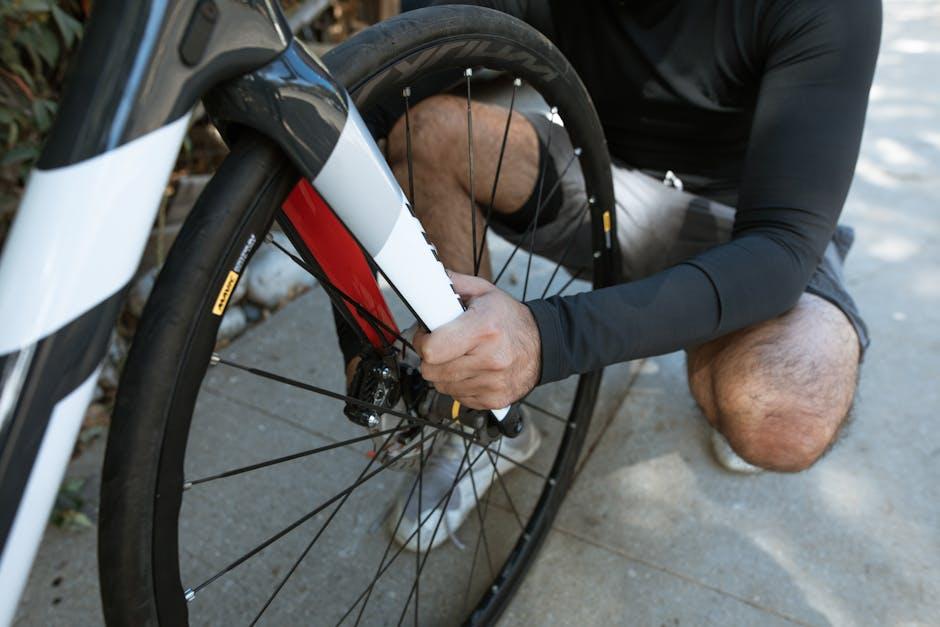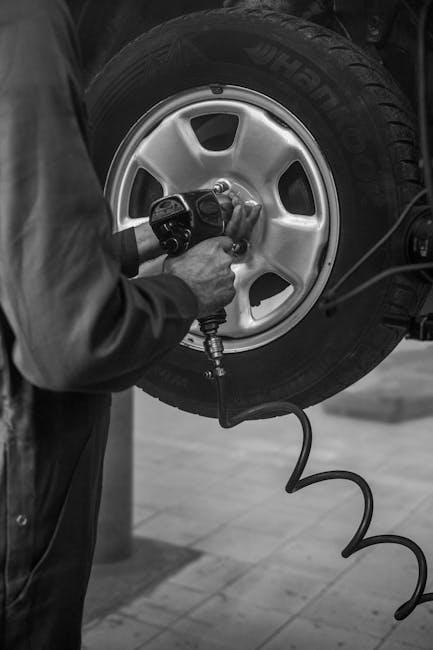Picture this: you’re cruising down a winding road, the hum of your tires whispering beneath you, and everything feels perfectly in sync. But then, a subtle tug to one side, uneven tire wear, or a stubborn steering wheel that won’t center—signs that your car might be pleading for a wheel alignment. It’s a common maintenance task, yet one that sparks a frequent question: how long does a wheel alignment take? In this article, we’ll explore the nuts and bolts of the process, demystifying the time it takes to get your wheels back on track and your ride smooth once again.
Table of Contents
- The Science Behind Wheel Alignment Timing
- Factors Influencing the Duration of Wheel Alignment
- Step-by-Step Overview of the Wheel Alignment Process
- Common Issues That Can Extend Alignment Time
- Tips for Preparing Your Vehicle to Speed Up Alignment
- Choosing the Right Service Center for Efficient Alignment
- Q&A
- The Conclusion

The Science Behind Wheel Alignment Timing
Precision is key when it comes to wheel alignment, hinging on the accurate adjustment of three critical angles: camber, caster, and toe. These angles dictate how your tires make contact with the road, impacting everything from tire wear to vehicle handling. During alignment, computerized sensors scan each wheel’s position, comparing it against manufacturer specifications. The process requires intricate calibration to ensure each wheel points in the optimal direction, allowing for smooth and safe driving dynamics.
The timing of the alignment procedure can vary based on several factors, including the vehicle model, the type of alignment performed (two-wheel vs. four-wheel), and the equipment used. Modern alignment machines, equipped with advanced laser-guided technology, have streamlined this process considerably. Here’s a quick lookup table outlining typical adjustment times:
| Alignment Type | Average Time |
|---|---|
| Two-Wheel Alignment | 20-30 minutes |
| Four-Wheel Alignment | 45-60 minutes |
| Specialty Vehicles (SUVs/Trucks) | 60-90 minutes |
- Environmental factors: Road conditions and previous damage can extend timing.
- Technician expertise: Skilled professionals conduct quicker, more precise alignments.
- Equipment type: Newer machinery typically reduces service durations.

Factors Influencing the Duration of Wheel Alignment
The time it takes to complete a wheel alignment can vary significantly depending on several key factors. First, the type of vehicle plays a crucial role; luxury cars or those with advanced suspension systems tend to require more precise handling and adjustments, extending the duration. Similarly, the vehicle’s condition is important—cars with worn-out suspension components or severe misalignment issues usually demand more time for diagnosis and correction. Technicians may need to replace parts or make multiple adjustments to ensure optimal alignment, resulting in longer service times.
Additionally, the tools and technology used in the alignment process can influence how long it takes. Modern, computerized alignment systems provide faster and more accurate measurements compared to traditional methods. The shop’s workload and the technician’s experience also matter; a highly skilled technician with state-of-the-art equipment can often complete the alignment more efficiently. Below is a snapshot of common factors impacting alignment duration:
| Factor | Impact on Duration |
|---|---|
| Vehicle Type | Standard cars: ~30 mins Luxury/SUVs: up to 60 mins |
| Suspension Condition | Minor adjustments: quick Worn components: longer process |
| Alignment Technology | Computerized: faster & precise Manual: slower |
| Technician Skill | Experienced: efficient Less experienced: more time |

Step-by-Step Overview of the Wheel Alignment Process
When your vehicle arrives at the shop for an alignment, the technician begins by mounting special sensors onto each wheel to accurately measure their current angles. These sensors communicate with a computerized system that compares the wheels’ positioning against the manufacturer’s specifications. Before adjustments begin, the mechanic inspects the suspension and steering components for any wear or damage that might affect alignment. Minor tweaks to camber, caster, and toe angles are then carefully made using precision tools, a process that requires both skill and attention to detail.
- Initial inspection of tires and suspension parts
- Installation of alignment sensors
- Computerized measurement of wheel angles
- Adjustment of toe, camber, and caster
- Final testing to ensure specifications are met
Here’s a quick breakdown of the typical time needed for each phase involved:
| Process | Estimated Duration |
|---|---|
| Inspection & Setup | 10-15 minutes |
| Measurement & Analysis | 10-12 minutes |
| Adjustments | 15-20 minutes |
| Test Drive & Final Checks | 10-15 minutes |
The variability in time mostly depends on the vehicle’s condition and the alignment type needed, but these steps combined typically fit within a 45-minute to one-hour window.

Common Issues That Can Extend Alignment Time
Several common complications can unexpectedly prolong the wheel alignment process. One frequent culprit is worn suspension components, such as ball joints or tie rods, which must be repaired or replaced before accurate alignment can be achieved. Additionally, misaligned or damaged tires can skew the calibration, requiring extra time to investigate and adjust tire pressures or replace faulty tires.
Another significant factor is the vehicle’s previous maintenance history. Cars that haven’t undergone routine checks may present hidden issues, like uneven tire wear or bent parts, causing alignment techs to perform more comprehensive diagnostics. Below is a table outlining typical issues and their average additional time impacts during alignment:
| Issue | Extra Time Added |
|---|---|
| Worn suspension parts replacement | 30-60 minutes |
| Uneven tire wear adjustment | 20-40 minutes |
| Steering system inspection | 15-30 minutes |
| Calibration of advanced driver-assist systems | 40-70 minutes |

Tips for Preparing Your Vehicle to Speed Up Alignment
Before heading to your appointment, make a few key checks that can significantly reduce the time spent during alignment. First, ensure your tires are properly inflated to the recommended pressure—this not only aids in accurate measurements but also prevents delays caused by the technician needing to adjust tire inflation. Additionally, clear your vehicle’s undercarriage of any heavy or loose debris that might interfere with sensors or alignment equipment.
It also helps to have your vehicle’s suspension and steering system in good shape beforehand. Worn-out components can extend the alignment process as extra repairs or adjustments may be necessary. Below is a quick checklist to prepare your vehicle efficiently:
- Check tire pressure and adjust as needed
- Inspect tires for uneven wear or damage
- Remove any heavy cargo or load from the car
- Ensure suspension parts are intact and responsive
- Verify steering system is functioning properly

Choosing the Right Service Center for Efficient Alignment
Ensuring your vehicle’s wheel alignment is done swiftly and accurately starts with selecting a competent service center. Look for facilities that advertise certified technicians and use state-of-the-art alignment equipment. Such investment in modern technology often means your car spends less time in the shop without compromising on precision. Additionally, reviews and recommendations can be valuable markers; centers praised for reliability and transparent service typically promise smoother, faster appointments.
Beyond technology and reputation, consider the level of customer care and convenience offered. Many top-tier shops provide:
- Flexible scheduling options, including online booking
- Clear communication about process duration and costs
- Comfortable waiting areas or shuttle services to keep your day moving
Choosing a service center that balances speed with quality will not only minimize downtime but ensure your vehicle’s alignment stays perfect for the long haul.
Q&A
Q: How long does a wheel alignment usually take?
A: On average, a standard wheel alignment takes about 30 to 60 minutes. However, the exact duration depends on your vehicle type, the condition of your suspension, and whether you’re getting a two-wheel or four-wheel alignment.
Q: Why can the time vary between 30 minutes and an hour?
A: If the alignment requires just minor adjustments, it’s usually on the quicker side. But if your vehicle has worn suspension parts or requires additional repairs before alignment, the process can stretch longer.
Q: Does the type of vehicle affect alignment time?
A: Yes! Larger vehicles such as trucks or SUVs might take a bit longer due to their size and the complexity of their alignment systems compared to smaller cars.
Q: Can a DIY alignment save time?
A: While some basic checks and adjustments can be done at home, professional alignments need precise equipment and expertise, which ensures safety and accuracy. Skipping the pros can sometimes cost you more time and money in the long run.
Q: Does getting an alignment done during a busy service time affect how long I wait?
A: Definitely. Even if the alignment itself takes around 45 minutes, busy shops might have a waiting period before your car can be serviced.
Q: What should I prepare before taking my car in for an alignment?
A: Make sure your tires are properly inflated and free of damage. Also, it’s helpful to inform the technician if you’ve noticed uneven tire wear or your vehicle pulling to one side. This can streamline the process.
Q: In short, how should I plan for a wheel alignment appointment?
A: Allocate about an hour for the service, plus extra time for waiting if the shop is busy. This ensures you won’t be caught off guard and can get back on the road quickly and safely.
The Conclusion
In the grand scheme of vehicle maintenance, a wheel alignment is a small but mighty task—often taking less time than your favorite podcast episode or a brisk coffee break. Whether it’s a swift 30 minutes or closer to an hour, knowing what to expect can steer you toward a smoother ride with clearer direction. So next time you feel your car pulling or notice uneven tire wear, remember: a quick alignment appointment can get you back on track, literally and figuratively, without losing much of your day. Safe travels and happy driving!
